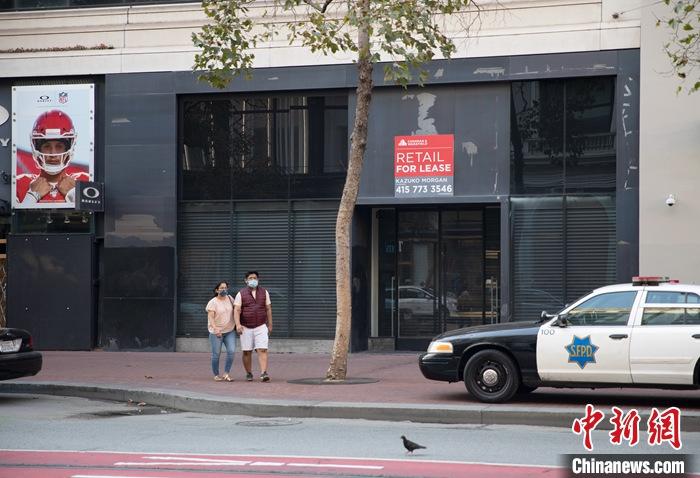China News Service, Beijing, September 24. Comprehensive news: As the new crown pneumonia epidemic continues to spread in the United States, while the number of confirmed cases and deaths continues to rise, the government's ineffective fight against the epidemic has also brought a "secondary crisis."
Many media in the United Kingdom and the United States are paying attention to the hunger caused by the new crown pandemic in the United States, predicting that "tens of millions of people in the United States will enter the'new hunger' era."
The British "Financial Times" website reported on the 23rd that under the new crown epidemic, many Americans are facing the problem of insufficient food for the first time in their lives.
Affected by the epidemic, the number of hungry people in the United States has increased significantly, and a considerable number of them are children.
Claire Bambino-Fentenotte, the chief executive of America’s largest hunger relief organization, Relief America, said that the new crown pneumonia epidemic has greatly aggravated relief efforts because the number of Americans in need of help has soared.
Claire Bambino-Fentenotte said that despite living in a country with enough food to feed everyone, many Americans still go hungry for the first time in their lives.
She said that in 2020, the "food insecure" population in the United States may increase by 17 million due to the epidemic.
According to the estimates of "Relief to the United States", this will increase the total number of this population from 37.2 million before the epidemic to 54 million.
On September 5, local time, a citizen of San Francisco, California, USA passed by the door of a closed store.
Local media in San Francisco cited information from the American review website that since the outbreak of the new crown pneumonia, more than 2,000 companies in the Bay Area have been permanently closed.
Photo by China News Agency reporter Liu Guanguan
The British "Daily Mail" has also previously reported that Americans lined up to receive free food.
According to the report, at Phil Park in Dallas, northern Texas, the convoy waiting to receive free food from the food relief station was out of sight.
In Pennsylvania, New Jersey and other places, there are similar free food distribution activities.
In New York, New Jersey, Los Angeles, and Oakland, there have also been "caring refrigerators". Some caring people put food in the refrigerator for free.
A recent report by the "New York Times" described a similar scenario: hundreds of cars lined up outside the "food bank", some of whom had never received relief food before.
In Houston, charities provide food to as many as 2,000 people every six hours.
The local community center distributed 567,000 pounds (approximately 257,000 kilograms) of food in 2019; from March 18 to July 6, 2020, the distribution of food reached 528,000 pounds.
The US "Wall Street Journal" reported that the Federal Bureau of Statistics data shows that the number of people facing hunger in the United States is getting larger and larger, and the chain reaction brought by the epidemic is intertwined. The Wall Street Journal analyzed that factors such as unemployment, outdated or cut off welfare policies, and rising food prices aggravated the hunger problem. According to the report, for many Americans, unemployment means losing their financial resources. According to data released by the US Department of Labor, the US unemployment rate was 10.2% in July. Prior to this, the number of people applying for unemployment benefits in the US exceeded one million for 20 consecutive weeks. In terms of social welfare, the US government approved a relief plan in March to provide the unemployed with a weekly unemployment benefit of $600, which has become the only source of income for many families. According to data from the U.S. Department of Labor, approximately 28 million people applied for this relief fund in July, but the program expired at the end of July. In terms of prices, data from the US Department of Labor shows that food prices in July increased by about 4.1% from the previous year, and beef prices soared by 15%. The National Broadcasting Corporation described food prices as "rapidly rising like a rocket." (Finish)

